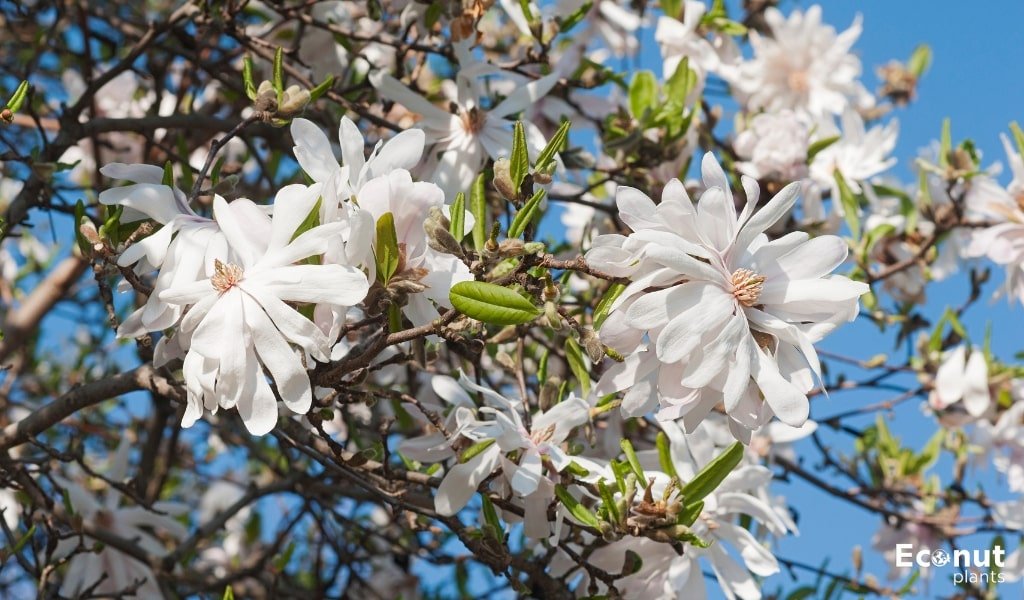Do you want to grow some white-blooming magnolia trees in your garden but don’t know where to begin? Magnolias are known for their fluffy white blossoms, though they can bloom in a wide range of hues. This article delves deeper into some of the best varieties of magnolia trees that bloom in various hues.
Here are some of the most well-known and some lesser-known but equally impressive examples of these amazing trees with stunning white flowers.
1. Bigleaf Magnolia

Scientific Name: Magnolia Macrophylla
Bloom Time: Summer and Fall
Light: Full Sun
Plant Size: 30’-40’ tall and wide
Plant Zone: 5-8
Bigleaf magnolia, as the name implies, grows leaves up to 32 inches long. It is typically a deciduous tree, like most magnolias, yet in warmer climates, it can be evergreen. The blooms are up to 10 inches across, white with purple petal bases, and they typically occur in May.
2. Fairy Cream
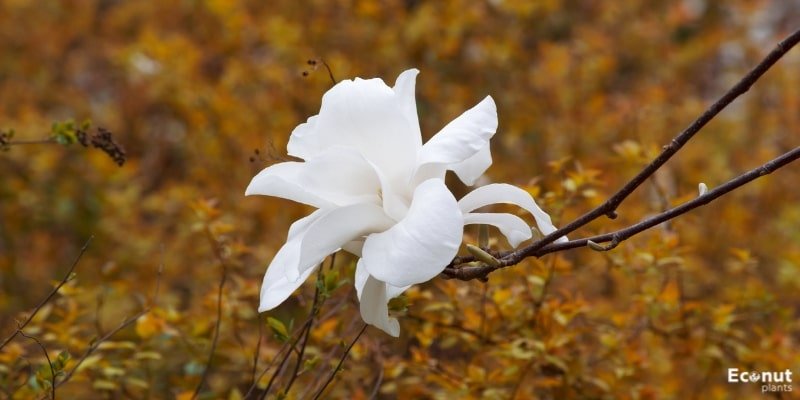
Scientific Name: Magnolia ‘Fairy Cream’
Bloom Time: Spring
Light: Full Sun
Plant Size: 3-9 feet tall and wide
Plant Zone: 8
This lovely evergreen magnolia is part of the Fairy Magnolia Series, which is known for its quick growth and low maintenance requirements. Small and shrubby, fairy magnolias often form a lovely hedge, but they can also be shaped into a small tree with a strong personality.
Every branch has blooms at the end that contrast well with the rich green foliage in the spring. The flowers are aromatic, star-shaped, and tiny. Magnolias of the Fairy Series are hardy and thrive in a wide range of soil conditions.
3. Southern Magnolia
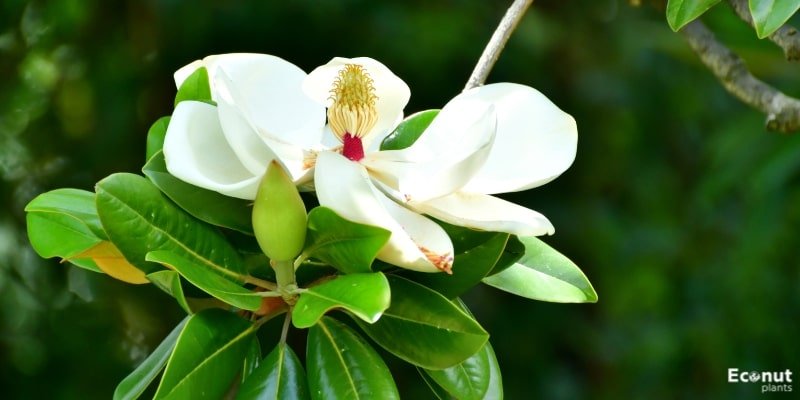
Scientific Name: Southern Magnolia
Bloom Time: Southern Magnolia
Light: Part Shade
Plant Size: 50 feet tall
Plant Zone: 6-10
Southern magnolias are large, natural evergreen trees found in the Southeast region of the United States. Brown fruits with vivid crimson seeds follow the flowers. The glossy, dark green, oval-shaped leaves are often trimmed for wreaths, swags, and interior décor. The undersides of the leaves are fuzzy and brown.
Plant southern magnolia in an area with lots of room for it to grow, or go for a smaller variety like “Teddy Bear,” “Kay Parris,” or “Little Gem.”
4. Cucumber Tree
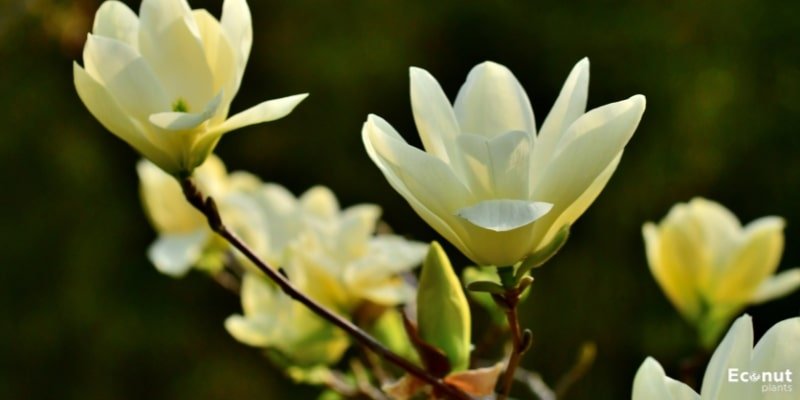
Scientific Name: Magnolia Acumnata
Bloom Time: Summer
Light: Full Sun
Plant Size: 60-75 feet
Plant Zone: 4-8
This beautiful magnolia tree bears yellow and yellow-green flowers in the summer and can reach heights of 60 to 80 feet. The flower color of ‘Brenas’ is deep yellow, ‘Koban Dori’ is canary yellow, and M. acuminata subcordata has large, fragrant lemony blooms.
Although their flowers usually blend in, the primary reason these native deciduous trees are grown is for their leaves. It is grown in Zones 4 through 8, although it is quite heat-sensitive.
5. Kobus Magnolia

Scientific Name: Magnolia ‘Kobus‘
Bloom Time: Early Spring
Light: Part Full Sun, Part Shade
Plant Size: 25-30 feet
Plant Zone: 5-8
Slowly expanding In addition to their massive, dark-green foliage, Kobus magnolias have fragrant, pink-tinged white blossoms that appear before the leaves open. The most common way to plant it is as a specimen tree in areas that want early-season flowers.
Japanese magnolia or northern Japanese magnolia is other names for it. This plant will often grow many trunks, but if you prune it down to a central leader, it will resemble a typical tree.
6. Anise Magnolia
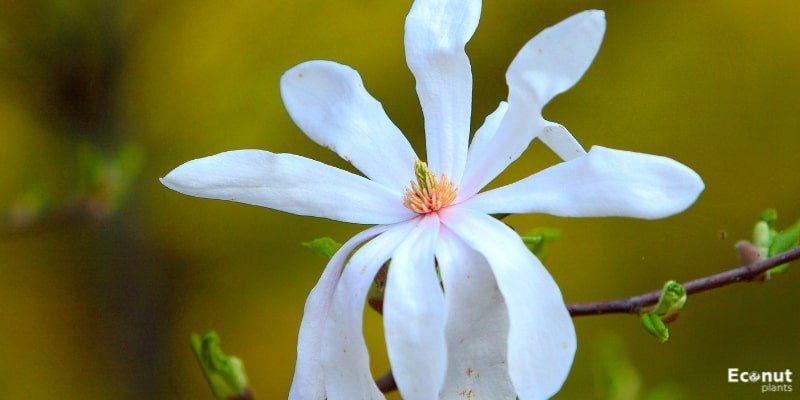
Scientific Name: Magnolia Salicifolia
Bloom Time: Spring
Light: Part Full Sun
Plant Size: 30-50 feet
Plant Zone: 6-9
Anise is a mid-sized Japanese tree that is also called Willow-Leaf Magnolia. The aroma of this magnolia’s blossoms, which is evocative of licorice and lemons, gave rise to the name Anise. This type grows rather tall over time and has a nice pyramidal growth habit.
In spring, the creamy white, mid-sized (3″–6″) flowers open before the foliage. The stamens and noticeable, pink-tinged carpels in the blooms give the petals a pink sheen. Despite being a relatively hardy species, anise is susceptible to late frosts due to when it blooms.
7. Sweet Bay Magnolia
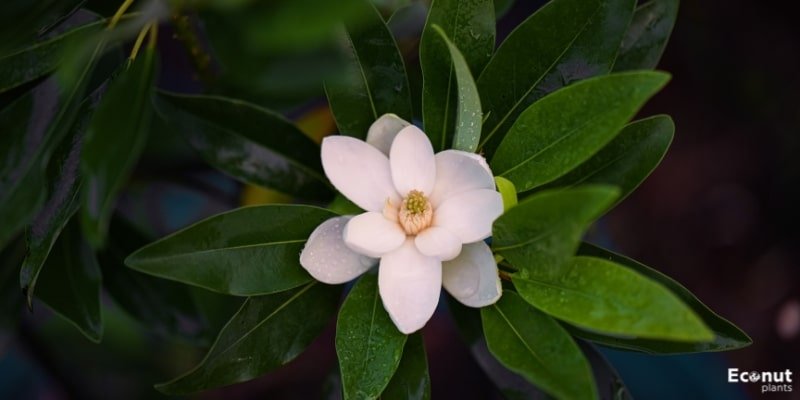
Scientific Name: Magnolia Virginiana
Bloom Time: Late Spring
Light: Part Full Sun
Plant Size: 30 feet
Plant Zone: 5-10
The sweet bay magnolia is a tiny, slow-growing tree native to North America with fragrant white flowers and dark green leaves. Sweet bay magnolia could be a suitable alternative if southern magnolia is too huge for your area.
This spring-flowering tree is evergreen in warm climes, although it frequently loses its leaves in colder ones. In contrast to other magnolias, it grows well in soggy, wet soil. Plant it in the landscape’s damp areas and low regions.
8. Loebner Magnolia
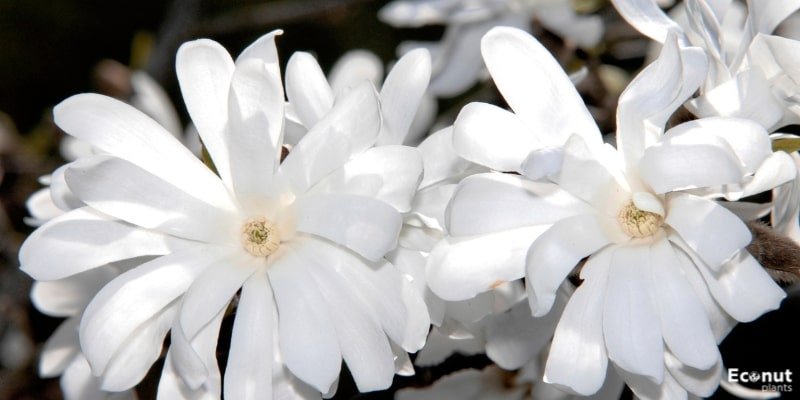
Scientific Name: Magnolia × loebneri
Bloom Time: Early spring
Light: Part Full Sun, partial Shade
Plant Size: 20-30 feet
Plant Zone: 5-9
Magnolia star magnolia flowers are similar to those of the deciduous Loebner magnolia. Though their flower parts resemble straps, these flowers are more widely separated from one another on the tree and have even longer and wider petals than M. stellata. ‘Merrill’ features white blooms, while ‘Ballerina’ is blush pink and aromatic.
9. Star Magnolia
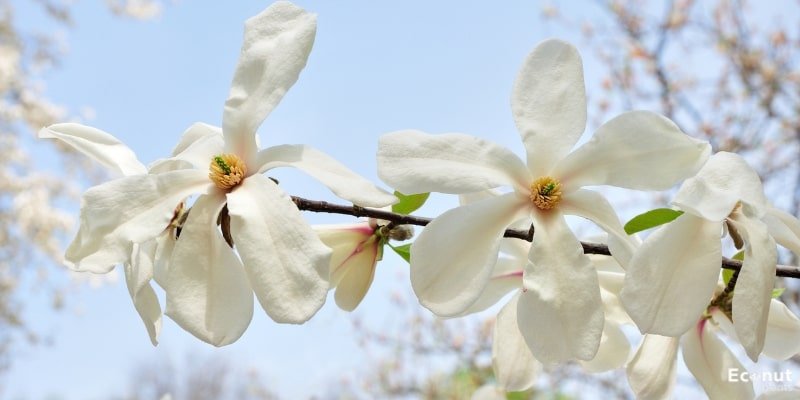
Scientific Name: Magnolia stellata
Bloom Time: Early spring
Light: Part Full Sun, partial Shade
Plant Size: 15-20 feet
Plant Zone: 4-8
A deciduous little tree or large shrub, star magnolia blooms in late winter or early spring, well ahead of all other flowering trees and even most spring bulbs.
The flowers are formed like stars. If you are experiencing trouble with your magnolia buds not opening, it may be because the buds are susceptible to damage from frost. In that case, try planting it in a sheltered spot to encourage springtime flowering.
10. Michelia Alba

Scientific Name: Magnolia x Alba
Bloom Time: Winter, spring
Light: Part Full Sun
Plant Size: 25-30 feet
Plant Zone: 8-12
This particular kind of magnolia is distinct from others in the species and possesses a number of intriguing traits. In zones 8 and 9, Michelia is deciduous, and it is evergreen up to zone 10. The foliage is exquisite and shiny. This particular magnolia loves to be found in warmer areas. Although it grows slowly, it blooms early.
The blooms have a characteristic shape resembling a spider, with long, thin petals. Bridal garlands made in Indonesia often feature strongly scented flowers. After being cut, flowers continue to smell for a while. Many names for this cultivar exist, most of which refer to its extraordinarily fragrant blossoms.
11. Umbrella Magnolia

Scientific Name: Magnolia tripetala
Bloom Time: Mid-spring to early summer
Light: partial shade, full sun
Plant Size: 15-30 feet
Plant Zone: 5-9
The massive, glossy leaves of the umbrella magnolia are what give it its name; they cascade down around the tips of the branches. This little tree has several stems, and as it is native to Appalachian understory forests, you should know that it thrives in shaded areas before worrying about how to take care of a magnolia tripetala.
Soon after the leaves appear, in late spring or early summer, is the creamy white, 6–10 inch-wide flowers. They smell nice, but not very sweet.

